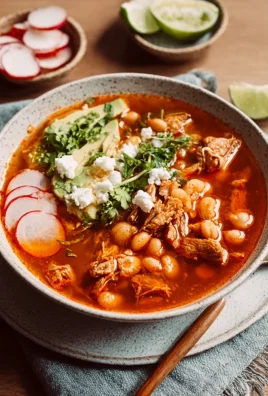Honey Lemon Vinaigrette is, in my opinion, nothing short of a culinary revelation. It’s a dressing that transcends the ordinary, transforming even the simplest bowl of greens into a vibrant, unforgettable experience. Imagine the rich heritage of classic vinaigrettes, an art form perfected over centuries, now infused with a modern, irresistible twist. This particular blend isn’t just a fleeting trend; it’s a beloved staple for many, including myself, offering a perfect symphony of flavors that genuinely brightens any dish.
What makes this creation so universally adored? It’s the impeccable balance. The natural, golden sweetness of honey harmonizes beautifully with the bright, zesty tang of fresh lemon juice, creating a refreshing counterpoint that awakens the palate. I’ve discovered that this isn’t just fantastic on a traditional salad; it makes an incredible marinade for poultry, a lively drizzle over roasted vegetables, or even a delightful finishing touch for grain bowls. The sheer versatility and the vibrant burst of flavor this Honey Lemon Vinaigrette provides make it an indispensable part of my kitchen repertoire, and I believe it will quickly become one of yours too.

Ingredients:
- For the Honey Lemon Vinaigrette:
- 1/2 cup extra virgin olive oil (a good quality one will make all the difference in the final flavor profile)
- 1/4 cup fresh lemon juice (from about 1-2 medium lemons; always use fresh for the brightest taste in your Honey Lemon Vinaigrette)
- 2 tablespoons honey (local honey can add a wonderful depth of flavor)
- 1 tablespoon Dijon mustard (adds a crucial emulsifying agent and a slight tang)
- 1 small clove garlic, minced very finely (or 1/2 teaspoon garlic powder for a milder touch)
- 1/2 teaspoon sea salt (or to taste)
- 1/4 teaspoon freshly ground black pepper (or to taste)
- For the Lemon Herb Grilled Chicken:
- 2 boneless, skinless chicken breasts (about 6-8 ounces each, ideally similar thickness for even cooking)
- 2 tablespoons extra virgin olive oil
- 1 tablespoon fresh lemon juice
- 1 teaspoon dried oregano
- 1 teaspoon dried thyme
- 1/2 teaspoon garlic powder
- 1/2 teaspoon sea salt
- 1/4 teaspoon freshly ground black pepper
- For the Fresh Salad Components:
- 8 ounces mixed greens (a lovely spring mix, baby spinach, or chopped romaine work beautifully)
- 1 pint cherry or grape tomatoes, halved (colorful ones add visual appeal)
- 1 English cucumber, diced (no need to peel if you like the skin, which also adds nutrients)
- 1/4 red onion, thinly sliced (for a milder flavor, you can soak the slices in cold water for 10 minutes)
- 1 ripe avocado, pitted, peeled, and diced (adds a creamy texture and healthy fats)
- 1/4 cup crumbled feta cheese or goat cheese (optional, but highly recommended for a salty, tangy counterpoint)
- 1/4 cup toasted pecans or slivered almonds (optional, for an extra crunch and nutty flavor)
- Fresh parsley or dill, chopped (for garnish, a final burst of freshness)
Preparing the Signature Honey Lemon Vinaigrette
- Gather Your Tools and Ingredients: First things first, let’s get organized. Grab a medium-sized mixing bowl or a jar with a tight-fitting lid. This will be where our beautiful Honey Lemon Vinaigrette comes to life. Having all your ingredients pre-measured makes the process seamless and enjoyable.
- Combine the Core Liquids: Into your chosen bowl or jar, pour the 1/4 cup of fresh lemon juice. Remember, fresh lemon juice is non-negotiable for that vibrant, zesty flavor that truly elevates a homemade vinaigrette. Next, add the 2 tablespoons of honey. If your honey is particularly thick, you might want to gently warm it for a few seconds in the microwave or a warm water bath to make it easier to mix.
- Add the Flavor Enhancers and Emulsifier: Now, let’s introduce the 1 tablespoon of Dijon mustard. Dijon isn’t just for flavor; it’s a fantastic natural emulsifier, meaning it helps bind the oil and vinegar together, preventing them from separating too quickly. Add your finely minced garlic clove (or garlic powder for convenience), 1/2 teaspoon of sea salt, and 1/4 teaspoon of freshly ground black pepper.
- Whisk Vigorously: With a whisk (or by shaking the jar vigorously if using a lid), begin to combine these ingredients. You want to mix them well until the honey has dissolved into the lemon juice and the Dijon mustard is fully incorporated. This initial whisking helps to create a stable base for our dressing.
- Slowly Drizzle in the Olive Oil: This is a crucial step for achieving a perfectly emulsified Honey Lemon Vinaigrette. While continuously whisking (or shaking), slowly drizzle in the 1/2 cup of extra virgin olive oil. Start with a very thin stream, almost drop by drop, especially at the beginning. As the mixture starts to thicken and emulsify, you can increase the speed of your pour slightly, but always keep whisking. The goal is to incorporate the oil gradually so that it fully binds with the other liquids, resulting in a creamy, cohesive dressing. You should see the vinaigrette transform from separated liquids into a smooth, slightly thickened, pale yellow emulsion.
- Taste and Adjust: Once all the olive oil is incorporated and your vinaigrette looks beautifully emulsified, give it a taste. This is your chance to personalize it. Does it need a little more salt to brighten the flavors? Perhaps another grind of black pepper for a bit of warmth? If you prefer it a touch sweeter, a tiny bit more honey can be added. If you like it tangier, another squeeze of lemon juice might be just right. This step ensures your Honey Lemon Vinaigrette is perfectly tailored to your palate.
- Rest and Store: Your vinaigrette is now ready! You can use it immediately, or cover and refrigerate it. The flavors will deepen as it rests. If storing, it’s normal for a homemade vinaigrette to separate slightly over time. Just give it another good whisk or shake before serving to bring it back to its creamy, emulsified glory. This dressing is incredibly versatile and will keep well in the refrigerator for up to a week. It’s not just for this salad; consider it for roasted vegetables, marinades, or even as a light dip!
Marinating and Grilling the Lemon Herb Chicken
- Prepare the Chicken: Start by patting your boneless, skinless chicken breasts dry with paper towels. This helps ensure a better sear and keeps the marinade from becoming watery. If your chicken breasts are very thick, you might want to lightly pound them to an even 3/4-inch thickness. This promotes uniform cooking and prevents one part from being undercooked while another is overcooked.
- Create the Marinade: In a shallow dish or a re-sealable plastic bag, combine the 2 tablespoons of extra virgin olive oil, 1 tablespoon of fresh lemon juice, 1 teaspoon of dried oregano, 1 teaspoon of dried thyme, 1/2 teaspoon of garlic powder, 1/2 teaspoon of sea salt, and 1/4 teaspoon of freshly ground black pepper. Whisk these ingredients together until well combined, creating a fragrant, zesty mixture. The herbs will infuse the chicken with wonderful aromatic notes.
- Marinate the Chicken: Add the prepared chicken breasts to the marinade, ensuring they are thoroughly coated. If using a bag, press out any excess air before sealing. If using a dish, cover it tightly with plastic wrap. Place the chicken in the refrigerator to marinate for at least 30 minutes, or up to 2 hours. Marinating for too long, especially with lemon juice, can begin to “cook” the chicken and alter its texture, so stick to the recommended timeframe for optimal results. This brief marination period is enough to impart flavor without denaturing the proteins too much.
- Preheat the Grill: While the chicken is marinating, preheat your grill to medium-high heat (about 400-450°F or 200-230°C). If you’re using a grill pan on the stovetop, preheat it over medium-high heat until it’s very hot. A properly preheated grill is essential for those beautiful grill marks and to prevent sticking.
- Prepare the Grill Grates: Once the grill is hot, carefully clean the grates with a wire brush. Then, lightly oil the grates by dipping a folded paper towel in a little vegetable oil and carefully rubbing it over the hot grates using tongs. This step is critical for preventing the chicken from sticking.
- Grill the Chicken: Remove the chicken from the marinade, letting any excess drip off. Discard the remaining marinade. Place the chicken breasts directly on the hot, oiled grill grates. Grill for about 5-7 minutes per side, depending on the thickness of your chicken. You’re looking for beautiful char marks and for the internal temperature to reach 165°F (74°C) when measured with an instant-read thermometer at the thickest part of the breast. Resist the urge to move the chicken too soon; letting it cook undisturbed allows for that perfect sear and easy release from the grates.
- Rest the Chicken: Once cooked, transfer the grilled chicken breasts to a clean cutting board. Cover them loosely with aluminum foil and let them rest for 5-10 minutes. This resting period is crucial! It allows the juices to redistribute throughout the meat, resulting in much juicier and more tender chicken. Skipping this step often leads to dry chicken.
- Slice the Chicken: After resting, slice the chicken against the grain into thin strips or dice it into bite-sized pieces. It’s now ready to be a star component of our delicious salad!
Prepping the Fresh Salad Components
- Wash and Dry the Greens: Begin by thoroughly washing your 8 ounces of mixed greens under cool running water. Ensure all dirt and debris are removed. Then, dry them completely. A salad spinner is excellent for this, but you can also gently pat them dry with paper towels. Dry greens are key for a vibrant salad because water dilutes dressing and prevents it from clinging properly to the leaves.
- Halve the Tomatoes: Take your pint of cherry or grape tomatoes and carefully slice each one in half. If you’re using larger tomatoes, you might want to dice them into bite-sized pieces instead. The vibrant color of the tomatoes will add a beautiful contrast to the green of the lettuce.
- Dice the Cucumber: For the English cucumber, decide if you want to peel it or leave the skin on. The skin adds extra fiber and nutrients, but peeling can make it more tender. Dice the cucumber into roughly 1/2-inch pieces. Keep the size consistent with your tomatoes for an appealing presentation.
- Slice the Red Onion: Using a sharp knife, thinly slice 1/4 of a red onion. Red onions add a fantastic sharp, peppery bite. If you find the flavor too intense, you can place the sliced onion in a small bowl of cold water for about 10-15 minutes. This technique mellows out the pungency significantly. Drain thoroughly before adding to the salad.
- Prepare the Avocado: Carefully cut the ripe avocado in half lengthwise around the pit. Twist the halves to separate. Gently tap your knife into the pit to secure it, then twist and lift to remove. Scoop out the flesh with a spoon, then dice it into roughly 1/2-inch cubes. If you’re not assembling immediately, you can toss the diced avocado with a tiny bit of lemon juice to prevent browning.
- Crumble the Cheese (Optional): If you’re using feta or goat cheese, gently crumble it with your fingers into small, uneven pieces. The rustic look adds charm.
- Toast the Nuts (Optional, but highly recommended): For a truly elevated experience, lightly toast your pecans or slivered almonds. Place them in a dry skillet over medium heat, stirring frequently, for 3-5 minutes until fragrant and lightly golden. Keep a close eye on them as nuts can burn quickly. Let them cool completely before adding to the salad to maintain their crispness. Toasted nuts add an incredible depth of flavor and satisfying crunch that can transform an ordinary salad.
- Chop Fresh Herbs: Finally, give your fresh parsley or dill a rough chop. These will be used as a fresh garnish, providing a final burst of color and aroma just before serving.
Assembling Your Delicious Salad
- Create Your Salad Base: In a large mixing bowl, gently place your thoroughly dried mixed greens. You want plenty of room to toss everything without bruising the delicate leaves.
- Add the Veggies: Scatter the halved cherry tomatoes, diced cucumber, thinly sliced red onion, and diced avocado over the greens. Distribute them evenly so that every forkful offers a variety of textures and flavors.
- Incorporate the Chicken: Arrange the sliced, grilled lemon herb chicken on top of the vegetables. You can layer it artfully or simply scatter it throughout the salad. The warm chicken will slightly wilt the greens, which some people absolutely love, adding another layer of texture.
- Add Optional Toppings: If using, sprinkle the crumbled feta or goat cheese and the toasted nuts over the salad. These additions provide wonderful textural contrasts and flavor complexities.
- Dress the Salad: Now for the star – your amazing homemade Honey Lemon Vinaigrette! Before pouring, give the vinaigrette one last good whisk or shake to re-emulsify it, ensuring it’s perfectly smooth and creamy. Drizzle about half to two-thirds of the vinaigrette over the entire salad. It’s always better to start with less dressing and add more if needed; you can always add, but you can’t take away!
- Gently Toss: Using large salad tongs or your clean hands, gently toss all the ingredients together. The goal is to coat everything lightly and evenly with the vinaigrette without crushing the delicate greens or breaking apart the avocado too much. Toss until every component has a light sheen of dressing.
- Final Garnish and Serve: Transfer the dressed salad to individual plates or a large serving platter. Garnish with your fresh chopped parsley or dill for a final flourish of color and fresh aroma. Serve immediately to enjoy the crispness of the greens and the vibrant flavors. This salad makes a fantastic light lunch or a satisfying dinner. The combination of the tangy Honey Lemon Vinaigrette with the savory grilled chicken and fresh vegetables is truly a treat for the senses!

Conclusion:
So there you have it – my absolute favorite, incredibly versatile, and undeniably delicious recipe that I simply cannot stop making. I truly believe that once you try this, it will become a staple in your kitchen too. What makes it a must-try, you ask? Well, it’s a symphony of fresh, bright flavors that awaken the palate without being overpowering. It strikes that perfect balance between tang and sweetness, making it suitable for a myriad of dishes. It’s the kind of recipe that elevates simple ingredients into something truly special, transforming an ordinary meal into a delightful culinary experience. Plus, it’s ridiculously easy to whip up, requiring minimal effort but delivering maximum impact. You’re not just making a dressing; you’re crafting a flavor enhancer that promises to add a touch of gourmet sophistication to your everyday cooking. Trust me when I say, this recipe is a game-changer, promising to inject a burst of sunshine into even the dullest of meals, making healthy eating not just tolerable, but genuinely exciting and incredibly satisfying. Its ability to brighten any dish is truly remarkable, and I’m always amazed by how such simple ingredients can combine to create something so extraordinary.
The star of the show, of course, is the magnificent Honey Lemon Vinaigrette itself. This isn’t just any dressing; it’s a testament to how humble ingredients can create a flavor profile that is both complex and comforting. The natural sweetness of honey perfectly mellows the zesty punch of fresh lemon, while a touch of mustard adds a subtle warmth and helps emulsify the dressing beautifully. It’s remarkably fresh, vibrant, and light, making it a perfect partner for so many different types of food. I’ve spent years perfecting this balance, and I’m confident that this particular blend will win you over with its refreshing taste and incredible adaptability. It’s bright, it’s clean, and it leaves you feeling invigorated after every bite, unlike heavy, creamy dressings that can weigh you down. This vinaigrette truly embodies the spirit of fresh, wholesome eating, making every dish it touches sing with a cheerful, zesty melody.
Endless Possibilities: Serving Suggestions and Variations to Spark Your Culinary Creativity
Now, let’s talk about how you can incorporate this wonder into your daily cooking. While it shines brightly as a classic salad dressing – think crisp mixed greens with cherry tomatoes, cucumbers, and a sprinkle of feta – its potential goes far beyond that. Don’t limit yourself to just leafy greens! Imagine it drizzled over a warm quinoa salad with roasted vegetables like asparagus, bell peppers, and zucchini; the warmth of the grains and veggies beautifully complements the dressing’s freshness. It’s also an exceptional marinade for chicken or fish. A quick soak in this vinaigrette imbues your protein with incredible flavor, keeping it moist and tender during cooking. Try marinating salmon fillets for 30 minutes before grilling or baking; the lemon and honey create a beautiful glaze and a delightful crust.
Furthermore, consider it as a finishing drizzle for roasted or steamed vegetables. A simple plate of broccoli, green beans, or carrots transforms into a gourmet side dish with a generous splash of this dressing. The acidity cuts through the earthiness of the vegetables, enhancing their natural sweetness. I also love using it in grain bowls. Layer your favorite grain – farro, brown rice, or couscous – with some avocado, black beans, corn, and a protein of choice, then douse it with this flavorful liquid. It ties all the components together beautifully, adding a much-needed zing. For a quick appetizer, try drizzling it over fresh fruit like melon or berries; the sweet and tangy notes create an unexpected but delightful pairing that will surprise and delight your guests. You can even whisk in a tablespoon of finely chopped fresh herbs like dill or chives for an extra layer of complexity, tailoring it to whatever dish you’re preparing. Or, for a hint of spice, a tiny pinch of red pepper flakes can provide a gentle kick without overwhelming the delicate balance of the main flavors. This adaptability is precisely what makes it so indispensable in my kitchen, proving that a single, well-crafted dressing can truly elevate an entire repertoire of meals.
Make It Your Own: Simple Tweaks for Personalized Flavor
Feeling adventurous? You can easily tweak this recipe to suit your personal preferences. For a slightly sweeter profile, add a touch more honey. If you prefer more tang, an extra squeeze of lemon juice will do the trick. You could also experiment with different types of vinegar, though I find white wine vinegar or apple cider vinegar works best to maintain the bright, clean flavor profile. Balsamic, for instance, would change the character quite a bit, making it deeper and less vibrant. If you don’t have Dijon mustard, a tiny bit of whole grain mustard can work in a pinch, adding a lovely texture and a slightly different pungency. And don’t forget the fresh herbs! Finely chopped parsley, mint, or even a little tarragon can add wonderful nuances, elevating the dressing to new heights. The beauty of this recipe lies in its forgiving nature and its ability to be a blank canvas for your culinary imagination. Don’t be afraid to play around with the ratios and additions; you might discover your new favorite variation that perfectly suits your palate and makes this staple even more uniquely yours!
Now it’s your turn! I’ve shared my secret for unlocking incredible flavor with minimal effort, and I genuinely hope you’re as excited to try this as I am to share it. Take the leap, gather your ingredients, and whip up a batch of this fantastic dressing. I promise you won’t regret it. Once you’ve experienced the magic, I would absolutely love to hear about it. What did you pair it with? Did you make any exciting variations? Share your culinary adventures and experiences in the comments below, or tag me on social media. Your feedback and creativity inspire me, and I can’t wait to see how you make this recipe your own. Happy cooking, and get ready to fall in love with your new favorite dressing!

Honey Lemon Vinaigrette
This Easy, Bright & Zesty Honey Lemon Vinaigrette is a culinary revelation, transforming simple greens into a vibrant, unforgettable experience. Its impeccable balance of sweet honey and bright lemon tang awakens the palate. Versatile, it’s fantastic on traditional salads, as a marinade for poultry, or drizzled over roasted vegetables and grain bowls.
Ingredients
-
1/2 cup extra virgin olive oil
-
1/4 cup fresh lemon juice
-
2 tablespoons honey
-
1 tablespoon Dijon mustard
-
1 small clove garlic, minced (or 1/2 teaspoon garlic powder)
-
1/2 teaspoon sea salt
-
1/4 teaspoon freshly ground black pepper
Instructions
-
Step 1
In a medium mixing bowl or a jar with a tight-fitting lid, combine 1/4 cup fresh lemon juice and 2 tablespoons honey. If honey is particularly thick, gently warm it to make mixing easier. -
Step 2
Add 1 tablespoon Dijon mustard, 1 small finely minced garlic clove (or 1/2 teaspoon garlic powder), 1/2 teaspoon sea salt, and 1/4 teaspoon freshly ground black pepper. Whisk or shake vigorously until the honey dissolves and ingredients are well combined. -
Step 3
While continuously whisking (or shaking), slowly drizzle in 1/2 cup extra virgin olive oil. Begin with a very thin stream; as the mixture emulsifies and thickens, you can pour slightly faster, aiming for a smooth, slightly thickened emulsion. -
Step 4
Taste the vinaigrette and adjust seasonings to your preference. Add more salt, pepper, honey, or lemon juice as desired. -
Step 5
Use immediately, or cover and refrigerate for up to a week. If stored, whisk or shake well before serving to re-emulsify.
Important Information
Nutrition Facts (Per Serving)
It is important to consider this information as approximate and not to use it as definitive health advice.
Allergy Information
Please check ingredients for potential allergens and consult a health professional if in doubt.




Leave a Comment